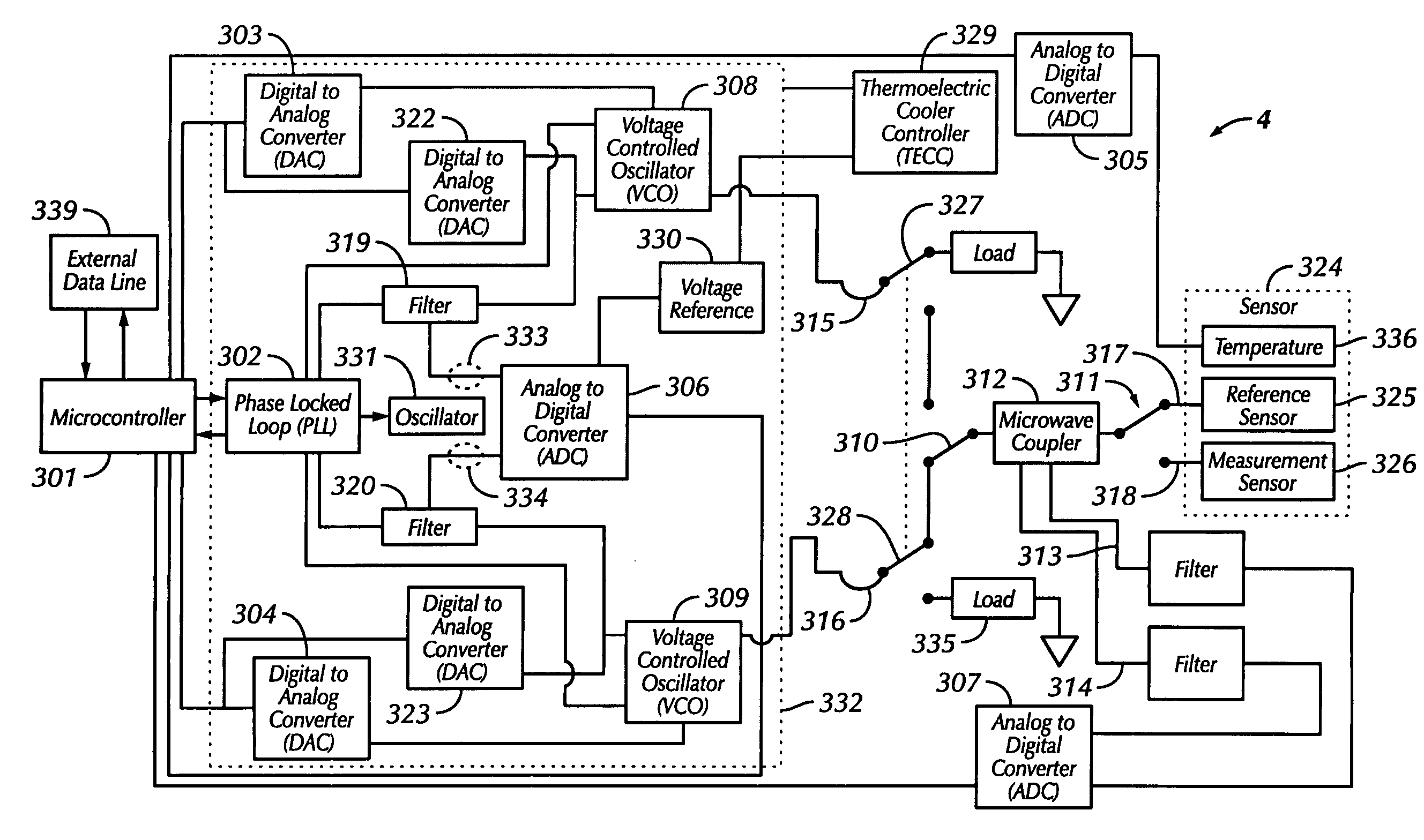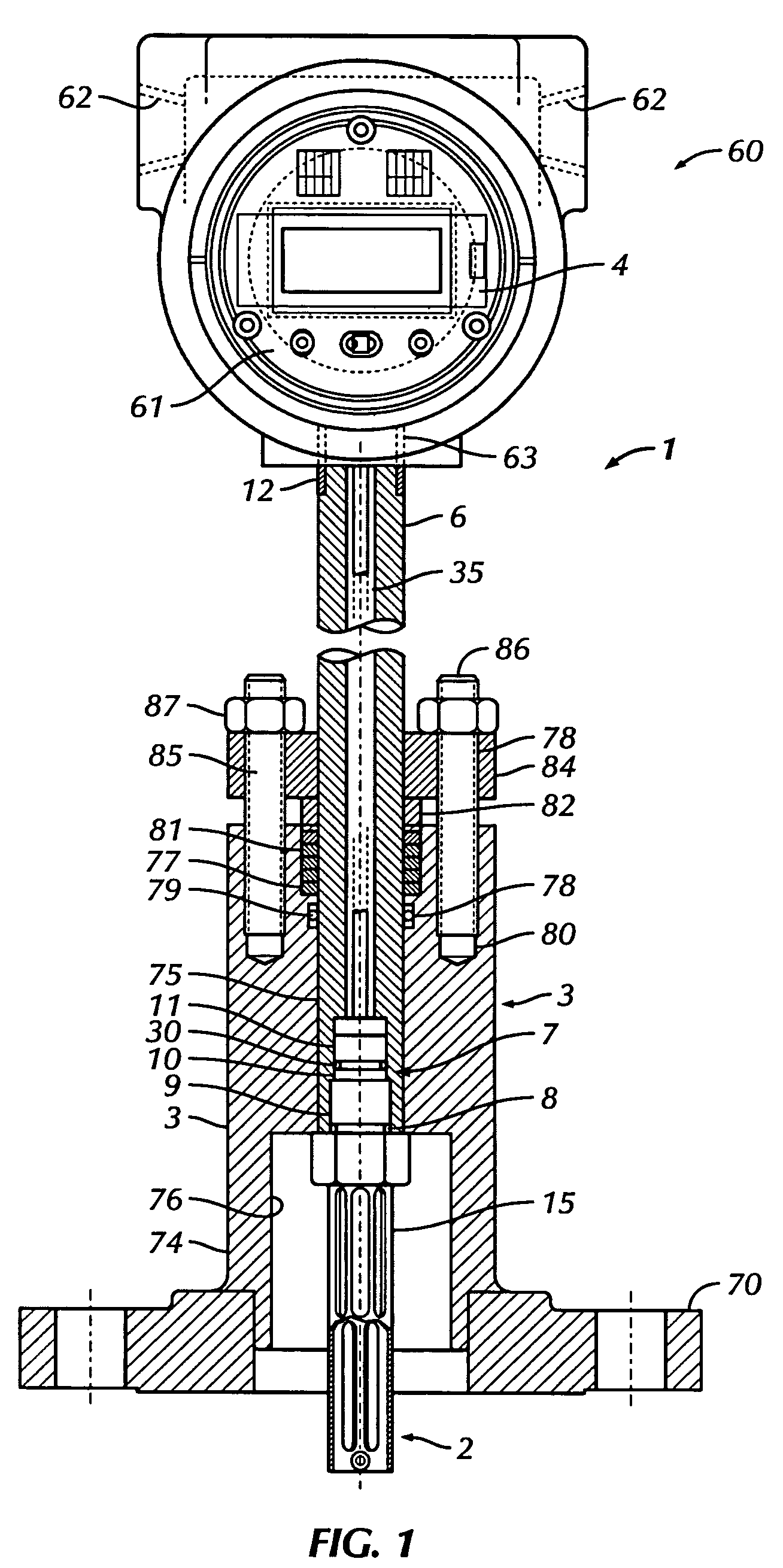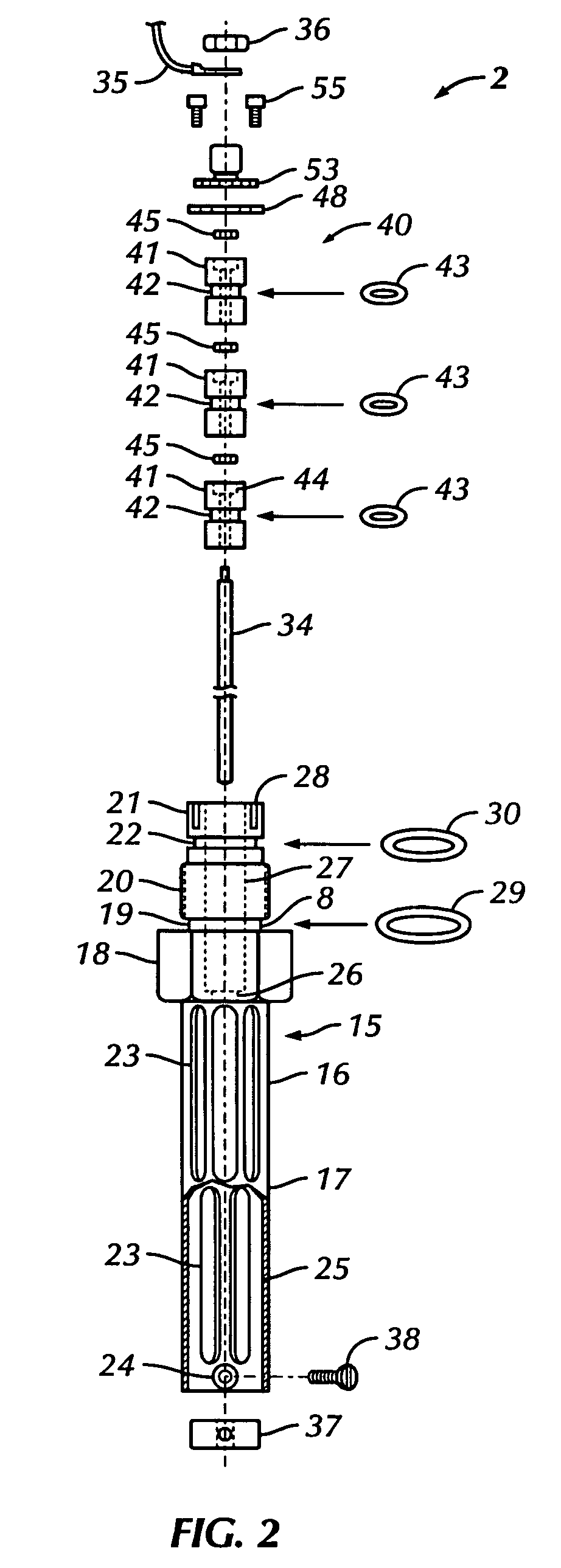Device for determining the composition of a fluid mixture
a fluid mixture and composition technology, applied in the direction of fluid resistance measurement, resistance/reactance/impedence, instruments, etc., can solve the problems of increasing instrument error, erroneous data, and significant water concentration measurement errors
- Summary
- Abstract
- Description
- Claims
- Application Information
AI Technical Summary
Benefits of technology
Problems solved by technology
Method used
Image
Examples
first embodiment
[0055]a sensor device 1 of the present invention is shown in FIGS. 1, 4 and 5. The sensor device 1 is configured for flange mounting on a fluid conduit (such as a pipeline 201 shown in FIGS. 4–5) provided with a co-mating flange. Typically, a probe 2 of the sensor device 1 is radially inserted into a flow stream confined within a circular tubular conduit, such as a tank or pipeline 201.
[0056]The flow conduit is provided with a radial circular port either by having a welded mounting flange preinstalled with the port during fabrication or by being hot-tapped in service with a conventional hot-tap fitting and machine used to produce a port. In the latter case, the mounting flange is mounted on the outer end of the hot tap fitting or, alternatively, on a valve on the outboard end of the hot tap fitting. An example of a suitable hot tap fitting and hot tap machine would be the IPSCO Flostop II system, provided by the International Piping Services Company, Broadview Ill. 60153. The materi...
embodiment 630
[0091]In this embodiment 630, identical electrode rods 670 are used. Each electrode rod 670 is an elongated right circular cylinder made of conductive metal and having at its connector end a male thread engageable by a hex nut 671 and an intermediate transverse flange adjacent the thread. As an alternative, the flange can be omitted and replaced by a second hex nut 671. Each electrode rod 670 is inserted through the center hole in installed electrode holder 651 or 655 and its nut 660 tightened so that flow past the electrode holder 651 or 655 is stopped by its O-ring 657 and flow past the electrode rod 670 is stopped by its O-ring 666. In this manner, each of the electrode rods 670 is caused to extend into the pressure containing body assembly 631 of the sensor device 630. A crimp-on ring wire terminal 674 with an attached wire 675 is clamped to the threaded end of each electrode rod 670 by a nut 671 to effect electrical connection between the rod 670 and the system electronics (not...
PUM
| Property | Measurement | Unit |
|---|---|---|
| frequency | aaaaa | aaaaa |
| operating frequency | aaaaa | aaaaa |
| operating frequency | aaaaa | aaaaa |
Abstract
Description
Claims
Application Information
 Login to View More
Login to View More - R&D
- Intellectual Property
- Life Sciences
- Materials
- Tech Scout
- Unparalleled Data Quality
- Higher Quality Content
- 60% Fewer Hallucinations
Browse by: Latest US Patents, China's latest patents, Technical Efficacy Thesaurus, Application Domain, Technology Topic, Popular Technical Reports.
© 2025 PatSnap. All rights reserved.Legal|Privacy policy|Modern Slavery Act Transparency Statement|Sitemap|About US| Contact US: help@patsnap.com



